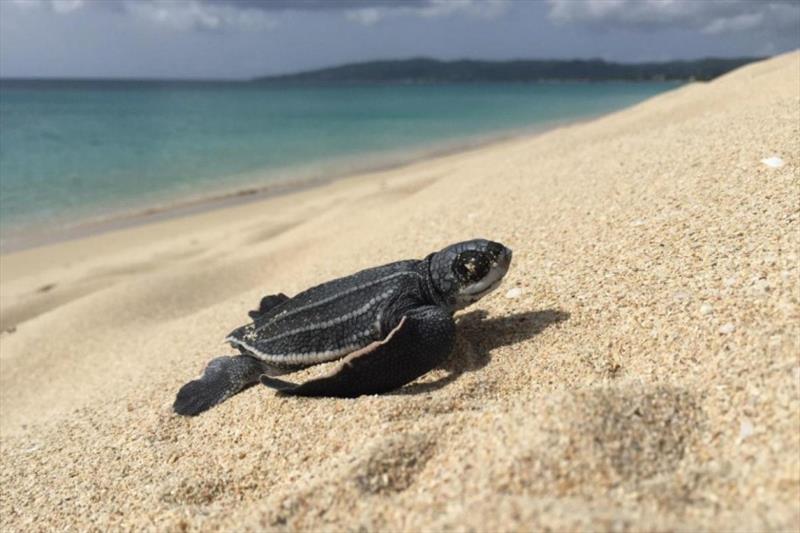
Celebrate Sea Turtle Week 2018
by Donna Wieting 10 Jun 2018 10:34 UTC

Leatherback hatchling © U.S. Fish and Wildlife Service / Shannon Borowy
It is my pleasure to welcome you to Sea Turtle Week 2018. Every day NOAA scientists and managers work hard to conserve and recover protected species as part of our mission, and sea turtle conservation activities have been a hallmark of those efforts.
This year we are highlighting our efforts to recover hawksbill sea turtles in the Hawaiian islands, the work we do with our partners to save sea turtles affected by cold-stunning, and the cutting-edge science we conduct to better understand sea turtle life history and habitat use. We will also be holding a Reddit "Ask Us Anything" on June 12, so we can answer questions about new research techniques.
Sea turtles are exceptional travelers during their lifetime. They leave the beach as hatchlings, grow up in multiple habitats that may be separated by hundreds or thousands of miles, then migrate back to their nesting beaches to lay the next generation of eggs. Their journey is fraught with threats, such as bycatch in fisheries, entanglement in marine debris, vessel strikes, barriers from coastline development, and confusion caused by artificial lighting on nesting beaches.
They are also in danger of being killed and having their eggs collected in some parts of the world. Because of these threats, sea turtle numbers plummeted during the 20th century.
Working with our partners, we have taken numerous conservation actions, from stranding response to developing and implementing solutions to reduce bycatch. This includes our long track record of protecting nesting turtles and working with partners to identify and develop technologies to reduce sea turtle bycatch in commercial fisheries, such as turtle excluder devices and circle hooks.
It has been wonderful to see that our efforts are making a difference to the species we protect and the communities that value them. Last summer, I visited colleagues from the Southwest Fisheries Science Center and the U.S. Fish and Wildlife Service in St. Croix, Virgin Islands. I watched with awe and wonder as dozens of leatherback hatchlings emerged from their nests onto the beach. We have made great progress in improving the conservation outlook for several species, including the Kemp's ridley turtle. But we have more to do for many others—including Pacific leatherbacks, one of our Species in the Spotlight.
I invite you to swim into the Sea Turtle Week page this week to learn more about the sea turtle conservation and research work we are doing at NOAA Fisheries. Please share with your friends and colleagues and invite them to think about what they can do in their daily lives to help conserve these magnificent animals.